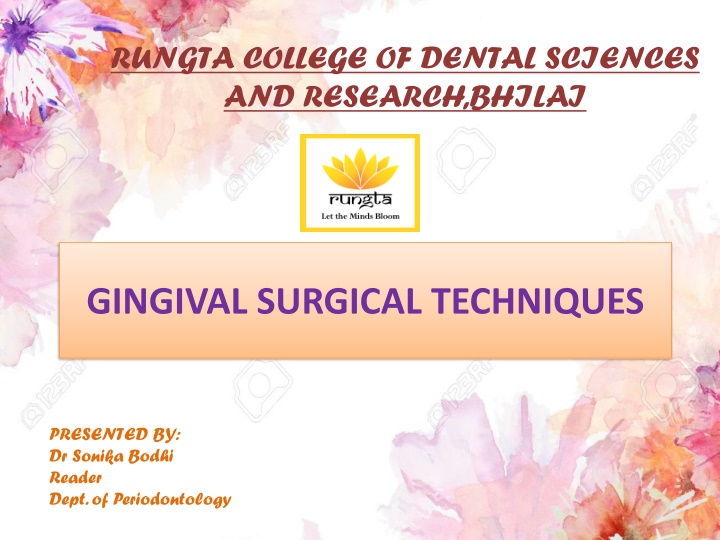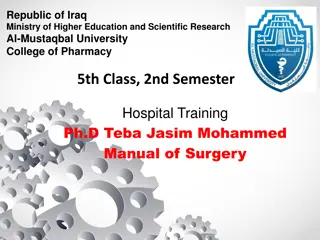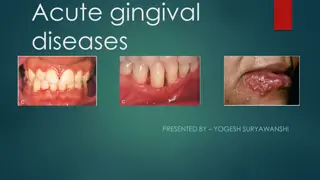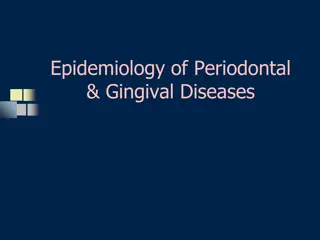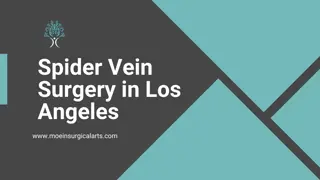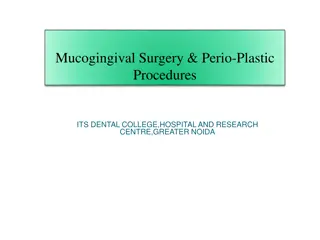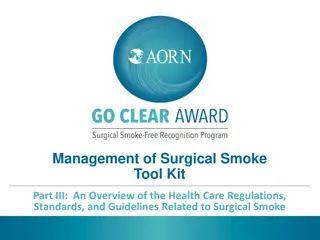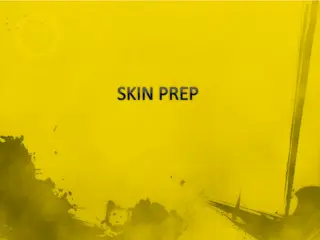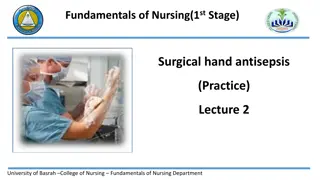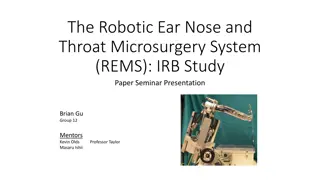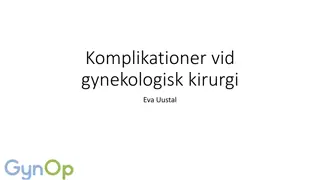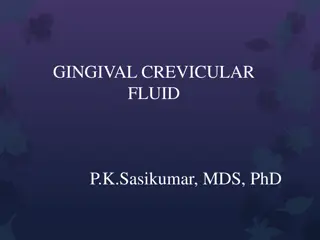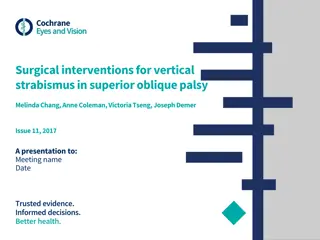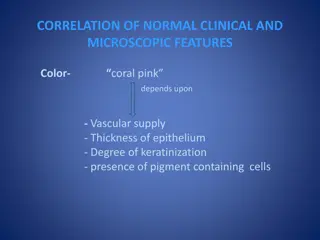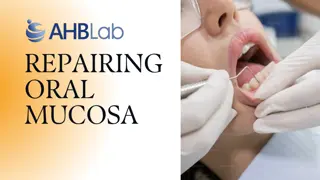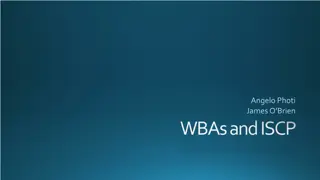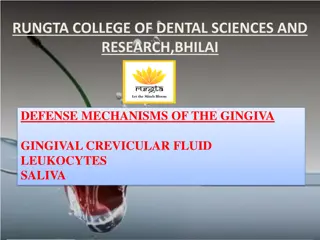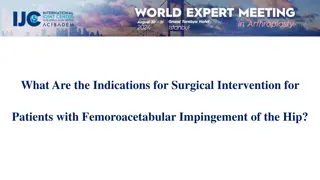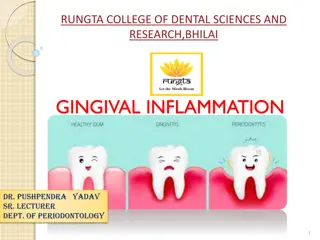GINGIVAL SURGICAL TECHNIQUES
Presented by Dr. Sonika Bodhi, this presentation covers gingival curettage, gingivectomy, and related surgical procedures in periodontal pocket reduction surgery. Learn about terminology, rationale, indications, procedures, and healing processes after treatment.
Download Presentation

Please find below an Image/Link to download the presentation.
The content on the website is provided AS IS for your information and personal use only. It may not be sold, licensed, or shared on other websites without obtaining consent from the author.If you encounter any issues during the download, it is possible that the publisher has removed the file from their server.
You are allowed to download the files provided on this website for personal or commercial use, subject to the condition that they are used lawfully. All files are the property of their respective owners.
The content on the website is provided AS IS for your information and personal use only. It may not be sold, licensed, or shared on other websites without obtaining consent from the author.
E N D
Presentation Transcript
RUNGTA COLLEGE OF DENTAL SCIENCES AND RESEARCH,BHILAI GINGIVAL SURGICAL TECHNIQUES PRESENTED BY: Dr Sonika Bodhi Reader Dept. of Periodontology
SPECIFIC LEARNING OBJECTIVES CORE AREAS Introduction DOMAIN Affective Affective CATEGORY Desire to know Desire to know Gingival curettage Cognitive Must to know Gingivectomy
CONTENTS PART I Introduction Gingival curettage Gingivectomy Summary References
CONTENTS PART II Gingivectomy Gingivoplasty Summary References
INTRODUCTION Periodontal pocket reduction surgery limited to the gingival tissues only and not involving the underlying osseous structures, without the use of flap surgery, can be classified as: Gingival curettage Gingivectomy Gingivoplasty
GINGIVAL CURETTAGE Terminology Rationale Indications Procedure Basic technique Excisional new attachment procedure (ENAP) Ultrasonic curettage The use of caustic drugs Healing after scaling & curettage Clinical appearance after scaling & curettage
TERMINOLOGY Gingival curettage consists of the removal of the inflamed soft tissue lateral to the pocket wall. Subgingival curettage refers to the procedure that is performed apical to the epithelial attachment, severing the connective tissue attachment down to the osseous crest. Inadvertent curettage refers to some degree of curettage which is done unintentionally when scaling and root planing.
RATIONALE Accomplishes the removal of the chronically inflamed granulation tissue that forms in the lateral wall of the periodontal pocket. Contents of the inflamed tissue: fibroblastic and angioblastic proliferation, areas of chronic inflammation, pieces of dislodged calculus and bacterial colonies. The latter may perpetuate the pathologic features of the tissue and hinder healing.
This inflamed granulation tissue is lined by epithelium, and deep strands of epithelium penetrate into the tissue. The presence of this epithelium is construed as a barrier to the attachment of new fibers in the area.
Indications for curettage Very limited It can be used after scaling and root planing for the following purposes: 1. Can be performed as a part of new attachment attempts in moderately deep intrabony pockets located in accessible areas where a type of closed surgery is deemed advisable.
2. as a nondefinitive procedure to reduce inflammation before pocket elimination using other methods or when more aggressive surgical techniques (e.g., flaps) are contraindicated in patients because of their age, systemic problems, psychologic problems, or other factors.
3. frequently performed on recall visits as a method of maintenance treatment for areas of recurrent inflammation and pocket depth.
PROCEDURE Basic technique Excisional new attachment procedure(ENAP) ultrasonic curettage, and the use of caustic drugs
BASIC TECHNIQUE Curettage does not eliminate the causes of inflammation (i.e., bacterial plaque and deposits). Therefore, curettage should always be preceded by scaling and root planing. Gingival curettage always requires some type of local anesthesia.
The instrument is inserted so as to engage the inner lining of the pocket wall and is carried along the soft tissue, usually in a horizontal stroke. The pocket wall may be supported by gentle finger pressure on the external surface. The curette is then placed under the cut edge of the junctional epithelium to undermine it.
In subgingival curettage, the tissues attached between the bottom of the pocket and the alveolar crest are removed with a scooping motion of the curette to the tooth surface The area is flushed to remove debris, and the tissue is partly adapted to the tooth by gentle finger pressure. In some cases, suturing of separated papillae and application of a periodontal pack may be indicated.
Subgingival curettage. A, Elimination of pocket lining. B, Elimination of junctional epithelium and granulation tissue. C, Procedure completed.
Excisional New Attachment Procedure (ENAP) Developed and used by the U.S. Naval Dental Corps. Definitive subgingival curettage procedure performed with a knife.
A, Internal bevel incision. B, After excision of tissue, scaling and root planing are performed
After adequate anesthesia, make an internal bevel incision Remove the excised tissue with a curette, carefully perform root planing on all exposed cementum
Approximate the wound edges; Place sutures and a periodontal dressing
Ultrasonic Curettage When applied to the gingiva of experimental animals, ultrasonic vibrations: disrupt tissue continuity, lift off epithelium, dismember collagen bundles, and alter the morphologic features of fibroblast nuclei.
Instruments used: The Morse scaler-shaped and rod-shaped ultrasonic
Caustic Drugs induce a chemical curettage of the lateral wall of the pocket or even the selective elimination of the epithelium. The extent of tissue destruction with these drugs cannot be controlled Drugs such as sodium sulfide, alkaline sodium hypochlorite solution (Antiformin), and phenol
HEALING AFTER SCALING AND CURETTAGE Immediately after curettage, a blood clot fills the pocket area, which is totally or partially devoid of epithelial lining. abundant PMNs appear shortly thereafter on the wound surface. followed by a rapid proliferation of granulation tissue
Restoration and epithelialization of the sulcus generally require 2 to 7 days Restoration of the junctional epithelium occurs in animals as early as 5 days after treatment. Immature collagen fibers appear within 21 days.
Clinical Appearance after Scaling and Curettage Immediately after scaling and curettage, the gingiva appears hemorrhagic and bright red. After 1 week, the gingiva appears reduced in height because of an apical shift in the position of the gingival margin.
After 2 weeks, and with proper oral hygiene by the patient, the normal color, consistency, surface texture, and contour of the gingiva are attained, and the gingival margin is well adapted to the tooth.
AAP- statement regarding gingival curettage 1989 world workshop in clinical periodontics concluded that curettage had no justifiable application during active therapy for chronic adult periodontitis Curettage is a procedure which provides historic interest in the evolution of periodontal therapy but has no current clinical relevance in the treatment of chronic periodontitis..... (AAP Academy Report 2002)
GINGIVECTOMY Rationale Indications Contraindications Techniques Surgical gingivectomy Gingivectomy by electrosurgery Laser gingivectomy Gingivectomy by chemosurgery
RATIONALE means excision of the gingiva. By removing the pocket wall, gingivectomy provides o visibility and accessibility for complete calculus removal and thorough smoothing of the roots o creating a favorable environment for gingival healing and o restoration of a physiologic gingival contour.
INDICATIONS 1. Elimination of suprabony pockets, regardless of their depth, if the pocket wall is fibrous and firm. 2. Elimination of gingival enlargements. 3. Elimination of suprabony periodontal abscesses
CONTRAINDICATIONS The need for bone surgery or examination of the bone shape and morphology. Situations in which the bottom of the pocket is apical to the mucogingival junction. Esthetic considerations, particularly in the anterior maxilla
SURGICAL GINGIVECTOMY STEP 1 The pockets on each surface are explored with a periodontal probe and marked with a pocket marker. Each pocket is marked in several areas to outline its course on each surface.
STEP 2 Instruments used: Periodontal knives ....Kirkland knives & Orban knives Bard-Parker knives #11 and #12 and scissors are used as auxiliary instruments
The incision is started apical to the points marking the course of the pockets and is directed coronally to a point between the base of the pocket and the crest of the bone. It should be as close as possible to the bone without exposing it, to remove the soft tissue coronal to the bone.
Discontinuous or continuous incisions may be used. The incision should be beveled at approximately 45 degrees to the tooth surface and should recreate, as far as possible, the normal festooned pattern of the gingiva. Failure to bevel leaves a broad, fibrous plateau ....delayed healing. In the interim, plaque and food accumulation may lead to recurrence of pockets.
STEP 3 Remove the excised pocket wall, clean the area, and closely examine the root surface. The most apical zone consists of a bandlike light zone where the tissues were attached, and coronally to it some calculus remnants, root caries, or root resorption may be found.
STEP 4 Carefully curette the granulation tissue, and remove any remaining calculus and necrotic cementum so as to leave a smooth and clean surface STEP 5 Cover the area with a surgical pack
Field of operation immediately after removing pocket wall. 1, Granulation tissue; 2, calculus and other root deposits; 3, clear space where junctional epithelium was attached.
SUMMARY Current periodontal surgery must consider the 1. conservation of keratinized gingiva, 2. minimal gingival tissue loss to maintain esthetics 3. adequate access to the osseous defects for definitive defect correction, and 4. minimal postsurgical discomfort and bleeding by attempting surgical procedures that will allow primary closure
The gingivectomy surgical technique has limited use in current surgical therapy because it does not satisfy these considerations in periodontal therapy. The clinician must carefully evaluate each case as to the proper application of this surgical procedure used in different ways.
REFERENCES Newman MG, Takei HH, Klokkevold PR, Carranza FA. Carranza s clinical periodontology, 10th ed. Saunders Elsevier; 2007. Lindhe J, Lang NP and Karring T. Clinical Periodontology and Implant Dentistry. 6th ed. Oxford (UK): Blackwell Publishing Ltd.; 2015. Newman MG, Takei HH, Klokkevold PR, Carranza FA. Carranza s clinical periodontology, 13th ed. Saunders Elsevier; 2018.
